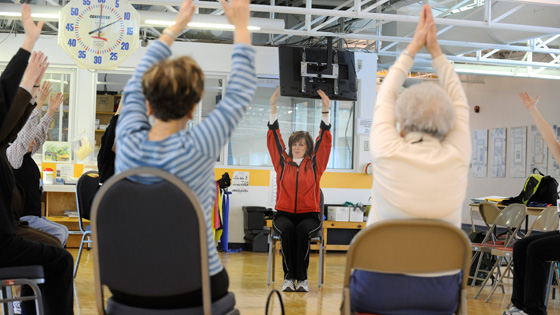
“Cardiac rehabilitation saves lives,” says Dr. Paul Oh, Medical Director of the Cardiovascular Prevention and Rehabilitation Program at TR and co-author of the study. Cardiac rehab participants, pictured above, benefit from the exercises.
(Photo: Toronto Rehab)
Bypass patients who are older, female and/or from lower-income neighbourhoods are more likely to face delays in beginning cardiac rehabilitation (CR), making them less likely to complete CR, which can lead to a higher mortality risk, suggests a new study.
The study, led by Dr. Susan Marzolini, exercise physiologist, Toronto Rehabilitation Institute (TR), UHN, found that bypass patients who waited longer than 60 days after their surgery to start CR were more likely to drop out of the program, attended fewer classes, and saw less improvement in their fat percentage and fitness, the Toronto study suggests.

(R) Dr. Susan Marzolini, exercise physiologist, Toronto Rehabilitation Institute, is the lead author of this study. (L) Dr. Paul Oh, Medical Director of the Cardiovascular Prevention and Rehabilitation Program at TR, co-authored the study.
(Photos: PMCC and Susan Marzolini)
"We know cardiac rehabilitation saves lives," says Dr. Paul Oh, Medical Director of the Cardiovascular Prevention and Rehabilitation Program at TR and co-author of the study. "Our past research has found that those who participate in cardiac rehabilitation after experiencing a major heart event cut the risk of dying from a subsequent heart event in half."
The study found that bypass patients are more likely to experience longer wait times, and subsequently poorer participation, if they are women, older, from a lower socioeconomic neighbourhood, employed, or had less social support. Any one of these factors is associated with longer wait times.
Read the media release here.
Read the study in Circulation: Cardiovascular Quality and Outcomes here.
